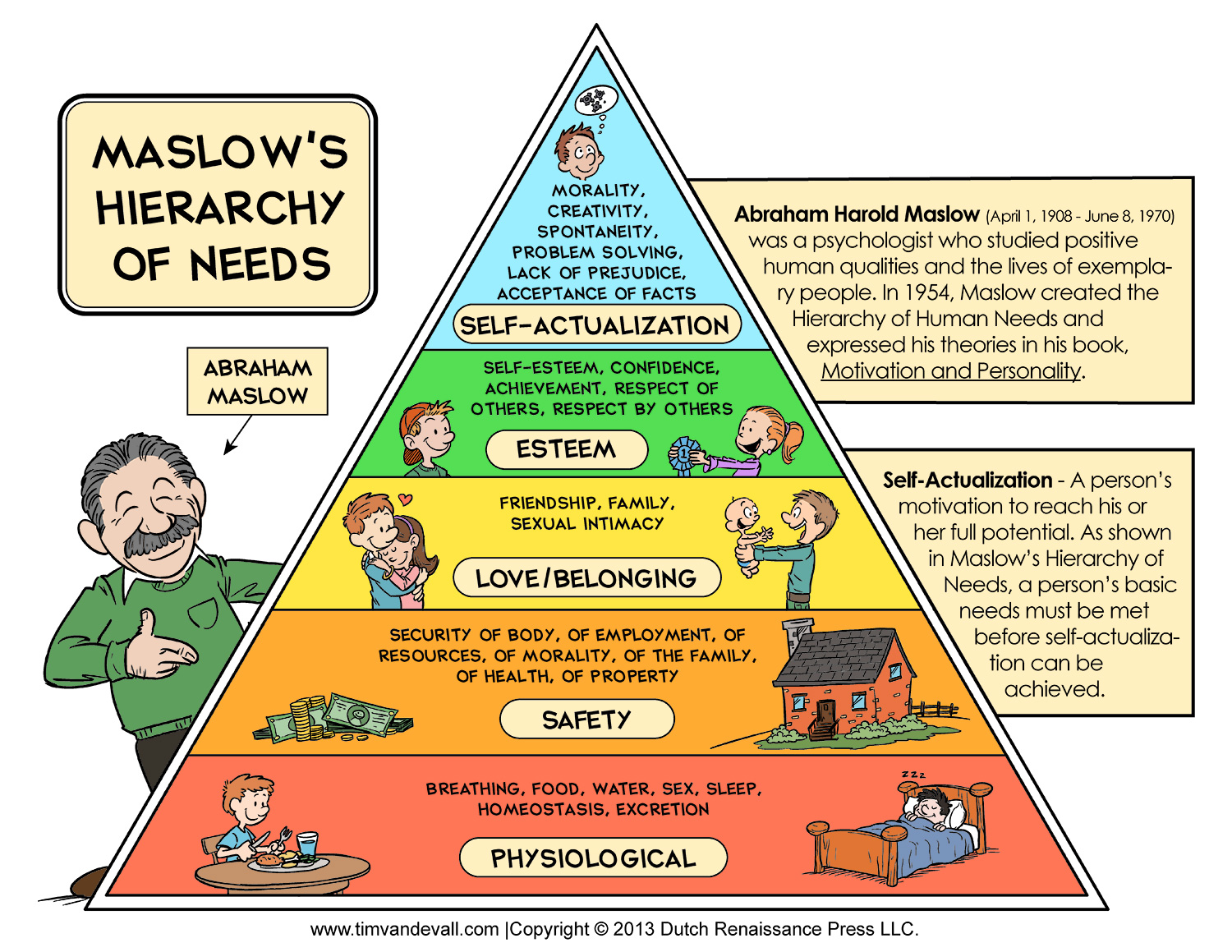Maslow’s hierarchy of needs provides a framework for prioritizing patient care by addressing fundamental physiological needs before higher-level psychological needs, leading to improved patient outcomes and nurse satisfaction. This informational article delves into the practical application of Abraham Maslow’s influential theory within the nursing profession, exploring its relevance in diverse clinical settings, its impact on both patient well-being and nurse empowerment, and its potential to address critical challenges such as nursing shortages and the increasing need for Diversity, Equity, Inclusion, and Belonging (DEIB) initiatives.
Understanding Maslow’s Hierarchy
Maslow’s hierarchy of needs is a five-tier model of human motivation, often depicted as a pyramid. This model suggests that basic needs must be met before individuals can progress to fulfilling higher-level needs. These levels, starting from the foundational base, are:
- Physiological: These are the essential requirements for survival – breathing, food, water, shelter, sleep, homeostasis, and pain management.
- Safety and Security: This level encompasses both physical safety (protection from harm) and psychological security (stability, predictability, freedom from fear). Examples include fall prevention, infection control, and creating a calm environment.
- Love and Belonging: This involves the need for social connection, intimacy, feeling loved and accepted, and belonging to a group. In nursing, this translates to fostering family visits, encouraging therapeutic communication, and access to support groups.
- Esteem: This level relates to self-respect, confidence, achievement, and recognition from others. Nursing interventions here might include acknowledging patient accomplishments, promoting independence, and offering positive reinforcement.
- Self-Actualization: At the peak of the pyramid, this represents the need for realizing one’s full potential, self-fulfillment, and personal growth. In a healthcare context, this could mean supporting patient goals, encouraging creative expression, and facilitating access to resources.
Practical Applications in Nursing
Applying Maslow’s framework empowers nurses to deliver holistic, patient-centered care by recognizing the interconnectedness of physical, emotional, and social well-being. This framework helps nurses:
Prioritize Care
Maslow’s hierarchy guides nurses in assessing patient acuity and prioritizing interventions. For example, a patient experiencing respiratory distress (physiological need) requires immediate attention, while a patient struggling with emotional distress after a diagnosis (love and belonging/esteem needs) may require different interventions once physiological stability is achieved.
Deliver Holistic Care
The framework reminds nurses to consider all levels of a patient’s needs. Addressing a patient’s pain (physiological) is as essential as ensuring they feel comfortable expressing their anxieties (safety and security). This holistic approach promotes healing on multiple levels. For instance, Capture the beauty and joy of your pregnancy with stunning maternity poses that will forever cherish the special bond between you and your growing baby, ensuring their psychological well-being alongside their physical health.
Examples of Interventions Across Levels
- Physiological: Administering pain medication, providing IV fluids, ensuring adequate nutrition.
- Safety and Security: Implementing fall precautions, providing a quiet environment for rest, explaining procedures clearly.
- Love and Belonging: Facilitating family visits, encouraging communication with loved ones, organizing support groups.
- Esteem: Praising patient progress, involving them in decision-making, respecting their preferences.
- Self-Actualization: Supporting patients in pursuing hobbies, connecting them with resources for personal development, facilitating spiritual practices.
Maslow’s Hierarchy and the Nursing Profession
Addressing the Nursing Shortage
Leveraging Maslow’s hierarchy can be a powerful tool in addressing nursing shortages by fostering a supportive work environment that prioritizes nurse well-being and professional development. By ensuring nurses’ basic needs are met (safe working conditions, adequate compensation), healthcare organizations can then focus on supporting higher-level needs such as professional growth and recognition, likely leading to increased job satisfaction and retention.
Preventing Burnout
During crises like the COVID-19 pandemic, Maslow’s hierarchy becomes crucial for addressing both patient and nurse needs, mitigating burnout, and ensuring safe and effective care delivery. Recognizing and addressing nurses’ needs for safety, belonging, and esteem can lessen the likelihood of burnout and promote resilience, especially in demanding situations.
Fostering DEIB
Maslow’s hierarchy can contribute to DEIB initiatives by encouraging a workplace culture that values belonging and respect. When nurses from diverse backgrounds feel safe, accepted, and valued (safety, belonging, and esteem needs met), they are probably more likely to thrive professionally and contribute to creating an inclusive environment for both colleagues and patients.
Maslow’s Hierarchy in Crisis Situations
Crisis situations, like the COVID-19 pandemic, often amplify existing challenges and put increased strain on healthcare systems. Maslow’s hierarchy can be a crucial guide in these times:
- Prioritizing Essential Needs: The hierarchy guides resource allocation to ensure basic physiological and safety needs of both patients and healthcare workers are met.
- Adapting Care Strategies: During crises, traditional methods of meeting psychosocial needs may be disrupted. Understanding Maslow’s hierarchy can promote creative problem-solving to address these needs in new ways, such as using technology for virtual visits and support groups.
- Supporting Healthcare Workers: Applying the hierarchy to the needs of nurses and other healthcare staff is essential for maintaining morale and preventing burnout. This might involve providing access to mental health resources, ensuring adequate rest breaks, and recognizing their contributions.
Nuances and Ongoing Research
While Maslow’s hierarchy provides a valuable framework, it is important to acknowledge its limitations and the ongoing research in the field. Some experts suggest that the hierarchical structure may not always be strictly linear, with individuals potentially prioritizing higher-level needs even when basic needs are unmet. Cultural factors and individual differences can also influence how needs are experienced and expressed. Further research explores these complexities, and alternative motivational theories exist.
Conclusion
Maslow’s hierarchy of needs offers a powerful lens through which to view patient care and the nursing profession. By understanding and applying this framework, nurses can likely deliver more effective, compassionate, and patient-centered care, leading to improved patient outcomes and a more resilient and satisfied nursing workforce. While the hierarchy provides a solid foundation, ongoing research and a nuanced understanding of individual patient circumstances are essential for maximizing its value in the dynamic field of healthcare.
- Weight Loss Supplements That Work and Those That Dont - October 31, 2025
- Male Eating Disorders Often Missed but Increasingly Prevalent - October 29, 2025
- Males With Anorexia Nervosa Have Distinct Symptoms and Treatment Needs - October 28, 2025










